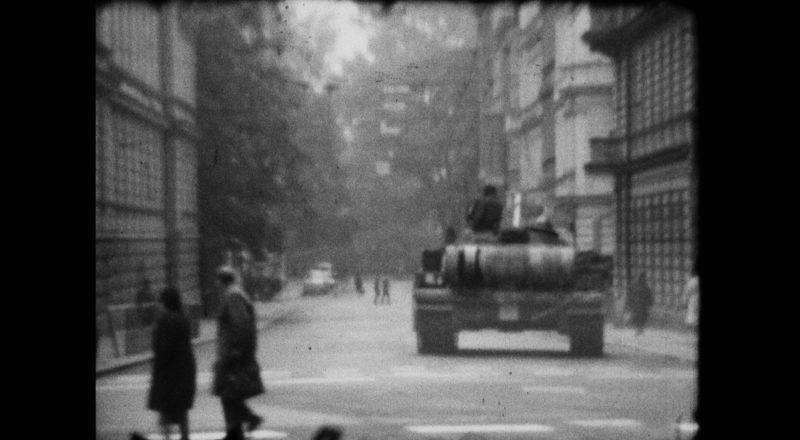INTERVIEW: ‘In the Intense Now’ takes in-depth look at rebellion in the streets
João Moreira Salles, a documentary filmmaker from Brazil, has crafted a new film that looks at three revolutions from the 1960s and how when young people take to the streets, there is a commonality in their methods, if not methodologies. In the Intense Now, which is currently playing New York City’s Film Forum, uses archival footage from many sources, all with the goal of taking an in-depth look at the political and economic uprisings in France, China and Czechoslovakia. Salles also serves as the first-person narrator of the documentary.
“It started with images that I found of my mother going to China in ‘66, and she was right there smack in the middle of the Cultural Revolution,” Salles said in a recent phone interview. “She wrote an article about the trip. I mean, she was very conservative. It was the opposite of what she believed. She was a Catholic, conservative lady from the interior of Brazil, and she got to China. She traveled in the country for a month. She filmed it, and she wrote about it. And when I read what she wrote about the trip, what struck me was the sheer happiness that she showed by being there, the intensity of the experience, which is something that she lost as time went by, and she became increasingly sadder and sadder. And we were living in Paris at the time, so by some strange reason, I thought that it would be a good idea to read what people were doing in Paris at the time we were there.”
Salles read the memoirs of people involved in the infamous May ’68 uprising in Paris, and he became fascinated by the question: What happens after the intensity of revolution is over? How does one find meaning when the political energy fades?
“So ’68 is such a rich year,” he said. “It’s important to state at first that it’s not a film about ’68 because that would be an impossible film to make, or at least a film that would be uninteresting, I think. It would just hop around countries; ’68 is very different in the U.S. or in Paris or in Brazil or in Mexico or in Japan or in Italy, in Germany, so I decided to concentrate on three, mainly two, places.”
The Paris segment of the film, which is interwoven with the other examples, is focused on the student revolt in 1968. This fine focus on the students, and not the labor protests, was important to Salles. He couldn’t be holistic because the issues are so grand in scale, so he was scrutinizing as an editor. Similarly, for the Czechoslovakia section, he focused on August of 1968.
“The tanks entered Prague, ending the experience of turning socialism into something more open and democratic,” he said about his starting point. “The dreams of a generation just were shattered because that possibility of having socialism with a human face [was gone]. That’s the way they framed it in Czechoslovakia.”
While scanning through the history, Salles also found an interesting connection between China and Paris, in that there was a strain of Maoists in Paris who were inspired by the Cultural Revolution.
There’s also one scene in the movie taken from Salles’ native Brazil in 1968, but rather than offering an in-depth investigation of his own country, he uses the footage to focus on one case involving the the killing of a young student.
“A lot of digging, really a lot of digging,” the director said about the behind-the-scenes work. “For instance, there’s one scene in the film which is three student leaders of the French rebellion [who] go to television, and for the first time France sees their faces and who they are. It’s a watershed because the regime was portraying them as firebrands, as flame throwers, as terrorists, and for the first time, people saw them. And they were young. They were vital. They were energetic.”
Salles found that this TV appearance changed the public’s perception toward the student protests.
“This was a very important thing that I wanted, and it took me about a year to find it because French television kept saying that they had destroyed footage,” he said. “So there was a lot of digging, and there was a lot of investigation in order to find the images. I think there’s a set of images also in Prague, which are amateur footage, people just going out with their cameras on the 21st of August just to film what was happening in their own cities, which is an invasion. And those images are so very, very rare. I don’t think many people have seen them, not even in Czechoslovakia, so there was a lot of work. And the praise doesn’t go to me, but it goes to the researcher who was relentless in trying to find those images. And it took about two years and a half to have all of them.”
Now that difficult research is on display for audience members to examine.
By John Soltes / Publisher / John@HollywoodSoapbox.com
In the Intense Now, from director João Moreira Salles, is currently playing the Film Forum in New York City. Click here for more information and tickets.
Photo: A scene from João Moreira Salles’s In the Intense Now. Photo courtesy of Icarus Films.

